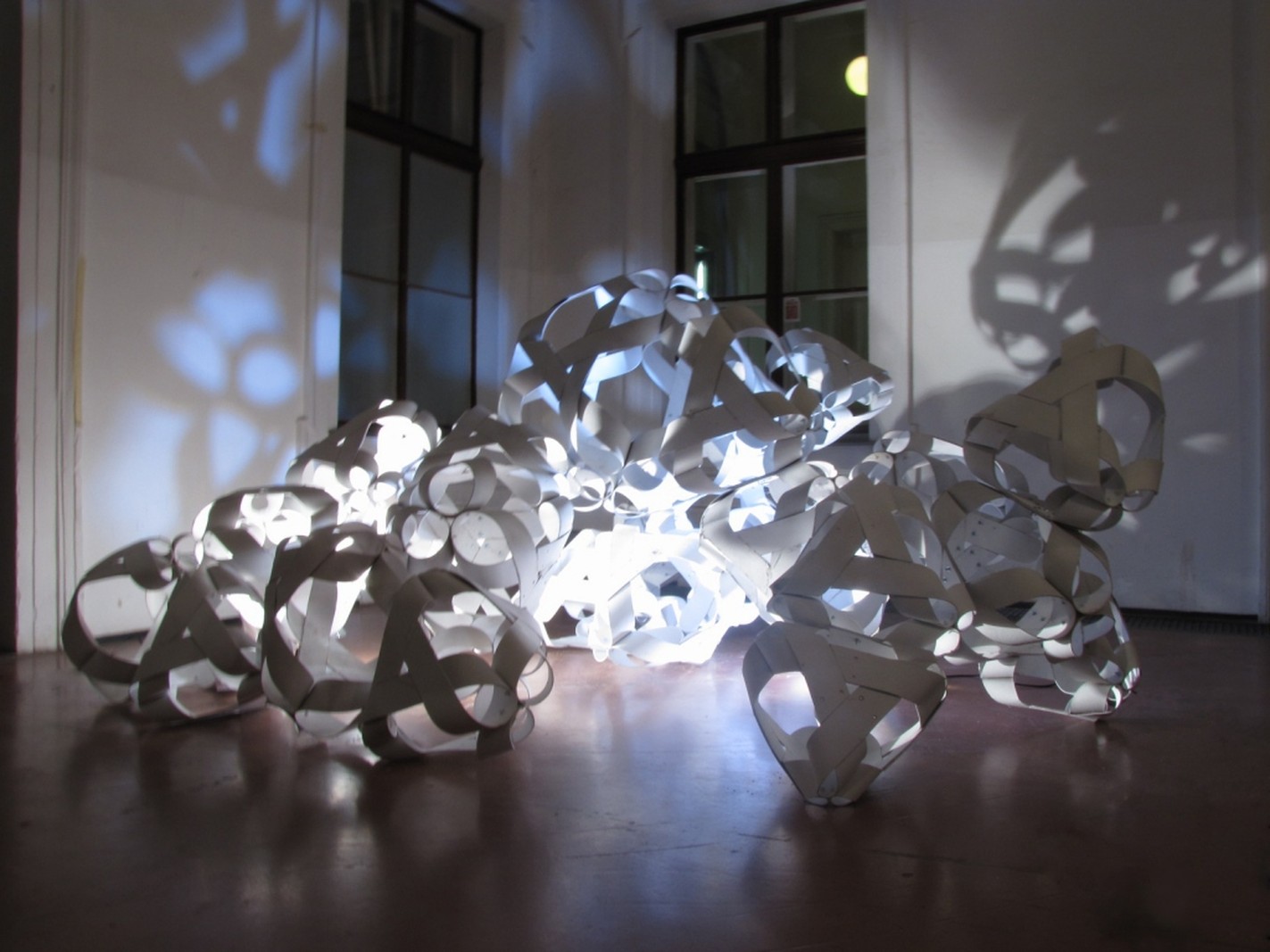6 March 2012
DigDesFab11
The task to design parametric structures in full scale by using easily processable materials with a special emphasis on the successful interaction of digital

The task to design parametric structures in full scale by using easily processable materials with a special emphasis on the successful interaction of digital design and production technology, primarily in architectural detailing. Software workshops throughout the semester were to teach and encourage a strong computational workflow.
The Digital Design and Fabrication Lab was a first time course held by the Institute of Construction and led by Mag.arch.MArch (Harvard) Andrei Gheorghe.
The seminar's aim was to teach the application of contemporary digital design and production methods.Students were working in groups to generate knowhow through the analysis of reference examples. Their main task was to design parametric structures in full scale by using easily processable materials. A special emphasis was put on the successful interaction of digital design and production technology, primarily in architectural detailing. Software workshops throughout the semester taught and encouraged a strong computational workflow.
The final projects were presented on the 31st of January in the Lichhof2 of The Angewandte. The exhibits were three 1:1 structures which were realised by virtue of applying structural principles on a computational level and prototyping with digital production methods.
Many Thanks to the Jury Georg, Robert, Hugo, Bence, Reiner, Sophie & Richardand to All Students.The Digital Design and Fabrication Lab was a first time course held by the Institute of Construction and led by Mag.arch.MArch (Harvard) Andrei Gheorghe.The seminar's aim was to teach the application of contemporary digital design and production methods.Students were working in groups to generate knowhow through the analysis of reference examples. Their main task was to design parametric structures in full scale by using easily processable materials. A special emphasis was put on the successful interaction of digital design and production technology, primarily in architectural detailing. Software workshops throughout the semester taught and encouraged a strong computational workflow.
The final projects were presented on the 31st of January in the Lichhof2 of The Angewandte. The exhibits were three 1:1 structures which were realised by virtue of applying structural principles on a computational level and prototyping with digital production methods.
Many Thanks to the Jury Georg, Robert, Hugo, Bence, Reiner, Sophie & Richardand to All Students.
http://digdesfab11.wordpress.com/